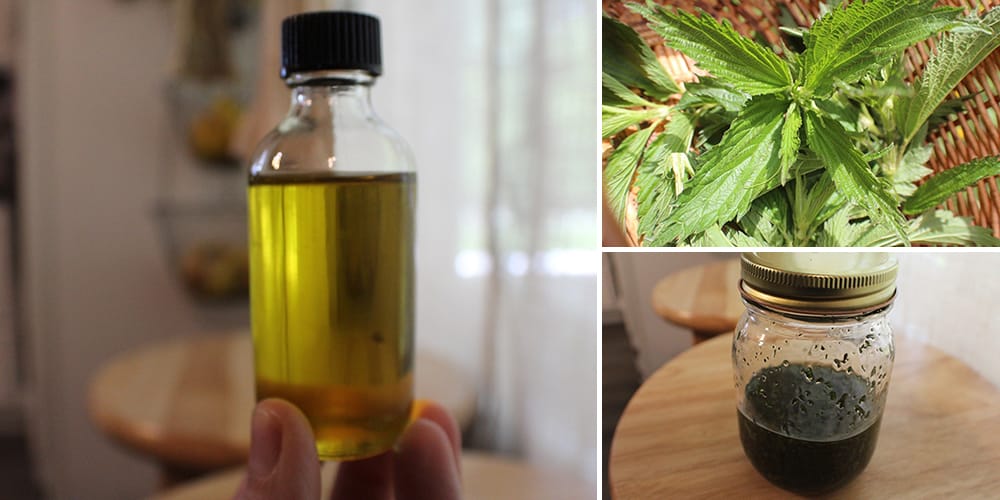
DIY Stinging Nettle Extract for Joint Pain
Nature works in mysterious ways. Sometimes, what hurts us on the outside can also heal us on the inside. Take bee stings, for example. We avoid them like the plague, right? Not all of us. Have you ever heard of bee venom therapy or BVT? It’s an experimental treatment that involves subjecting a person to bee stings to relieve pain and inflammation. People do this because, like nettles, bee venom contains natural chemicals that have anti-inflammatory and analgesic effects.
It’s kind of funny. Who would think something that makes you feel pain can also help relieve pain? Nevertheless, many swear that BVT helps with joint pain and inflammation linked with inflammatory types of arthritis. And Nettles, my friends, work in a similar fashion.
In this article, I’ll give you a brief overview of stinging nettles and explain why they are used for joint pain relief. Then, I’ll show you how to find, harvest, and turn them into a powerful natural remedy for pain management.
The Benefits of Stinging Nettle for Joint Pain
Let’s start with the science stuff, then we will get into all the poking fun.
Scientific sources have consistently shown that stinging nettles are a potent and effective natural remedy for reducing inflammation and relieving joint pain.
Several studies have demonstrated that they significantly lower inflammation, especially in those with inflammatory conditions like arthritis and osteoarthritis.
This is because stinging nettles trigger the release of serotonin and histamine, which stimulate pain neurons, reduce inflammation, and disrupt pain signal transmission.
They also contain formic acid, which can boost cellular reactions, capillary stimulation, and lymph movement. These chemical responses can help reduce inflammation, speed up healing time and improve circulation. Stinging nettle has demonstrated an ability to reduce pain intensity in people with conditions ranging from arthritis to lower back pain. And as it turns out, it’s a great natural substitute for potentially dangerous pharmaceutical painkillers.
Plus… they grow literally everywhere!
Finding Stinging Nettle
When you try your luck foraging for nettles, you’ll primarily come upon one of two types. Both stinging nettle (Urtica dioica) and wood nettle (Laportea canadensis) are nutritious and delicious wild edibles. Wood nettles have wider, broader leaves that alternate, whereas stinging nettles have longer, leaner leaves facing opposite directions.
Stinging nettle leaves are oval or lance-shaped, while wood nettles are rounder. The nettle leaf benefits discussed here apply to stinging nettle. However, both varieties will undoubtedly ‘sting’ you if you touch them without gloves on.
When in doubt, use a field guide or identification app to confirm your findings.
Stinging nettle leaves should be collected in the spring while they are still fresh and green. This helps reduce stings, but it’s also when they are most beneficial.
Pick the top few leaves and leave the lower ones alone when harvesting. Once the nettles flower, the leaves are typically no longer used. Older nettle leaves contain insoluble calcium carbonate crystals that are hard to flush out of the body. These crystals can build up in the kidneys and cause infection and kidney stones, especially for those prone to kidney issues.
You can look for stinging nettles in wooded areas or along riverbanks. Stinging nettles grow in more open and dry areas than wood nettles, which prefer to hide away under tree canopies. You’ll want to wear gloves and long sleeves to avoid stings while harvesting. If fresh plants are unavailable in your area, you can also consider purchasing dried stinging nettles from a health food store or online. However, these guys are relatively simple to find, and the chances of encountering a dangerous doppelganger are small.
Alternatively, you can purchase an already made Stinging Nettle tincture. Stinging nettle tinctures have excellent anti-inflammatory properties and can help with gout pain, eczema, blood sugar regulation, allergies, blood pressure control, and other ailments. Take 1-2 dropperfuls (~1-2ml) up to 3 times per day. You can also mix it with a carrier oil and apply it topically to the problem areas.
Make Your Own Stinging Nettle Extract
You don’t need much to make an oil extract from the nettle plant. You only need a jar, carrier oil, and some nettles! Make sure to wear gloves when picking stinging nettle. All you have to do is pluck the top growth from the plant.
I foraged some fresh leaves for today’s article. I learned most of my wilderness skills from the Wilderness Long-Term Survival Guide, which I recommend.
Since we will make a nettle extract for joint pain relief, we will extract the herbal components using grapeseed oil. I’ve chosen grapeseed oil for a couple of reasons.
Grapeseed oil has a smaller molecular size than, say, olive oil, so it’s easily absorbed by the skin. It also helps herbal extracts penetrate deeper into the body, like in the deeper tissues and joints, thereby enhancing the efficacy of the herbs.
Grapeseed oil is high in linoleic acid, which helps repair the skin’s natural barrier. It’s also lighter, thinner, and less greasy than olive or coconut oil. In short, grapeseed oil enhances the delivery of medicinal ingredients, helping to relieve joint pain in the hands, knees, legs, and other areas of the body. And… it’s also anti-inflammatory all on its own!
The following recipe is a simple nettle-infused herbal oil that you can apply directly to achy joints or use to create a joint pain relief skin salve by heating it up and melting in a few beeswax pearls.
You will need:
- a handful of nettle tops / ½ cup of dried, crushed nettles
- grapeseed oil, enough to make the nettles float
- a pint-sized jar
- cheesecloth
- container with a tight fighting lid
Steps:
- Collect a handful of nettle tops and place them in a basket or bowl. You’ll want to end up with around a 1/2 cup of dried and crushed nettles.

- Once you have collected enough, rinse them well and lay them out to dry on a paper towel for a few days.

- If you don’t want to wait, you can dry them in a dehydrator for a few hours.

- After drying the nettle leaves, crush them to prepare them for the oil. This releases the nettle’s therapeutic components and makes it easier to cover them with oil.

- Add the crushed nettle leaves to a pint-sized jar and cover them with enough grapeseed oil for them to start to float.

- Then, cover the jar with a lid and place it in a cool, dark place to macerate for six weeks.

- After six weeks, strain your nettle oil through a cheesecloth and store it in a container with a tight fighting lid for up to a year.

How to Use
Apply nettle oil generously to aching joints and muscles and massage it in. You can do this as often as needed. Wear loose garments to avoid getting oil on your clothes.
As an alternative to making your own painkilling treatment, I recommend this anti-inflammatory Joint & Movement Salve, which works well for general joint aches and pains, arthritis, carpal tunnel, knee and muscle soreness, tennis elbow, and shoulder pain.
You may also like:

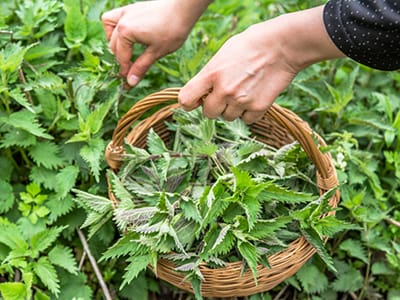
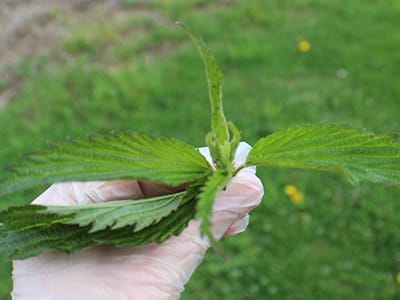
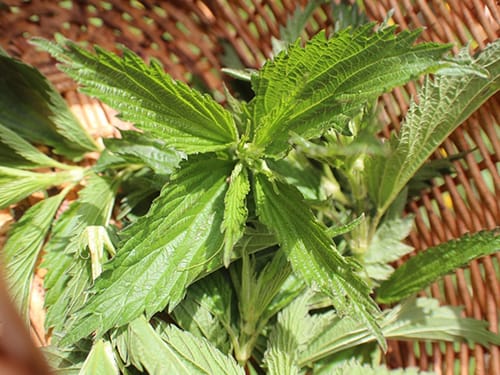

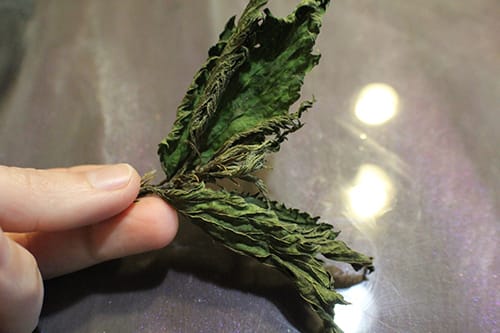
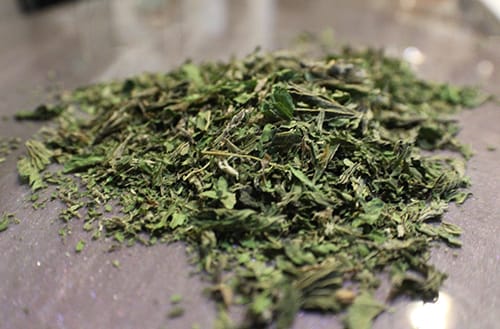
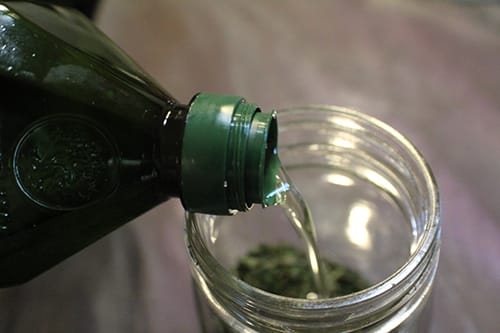
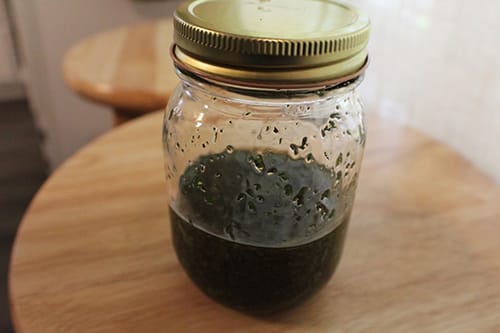

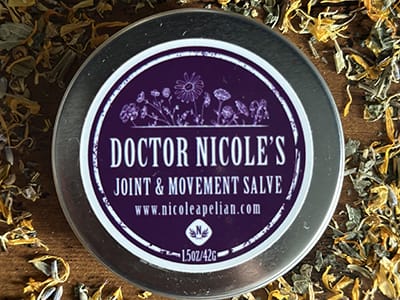
As a kid nettles usually grow near sword fens , getting stung was no problem . Just rub the fern pollen on it,it is alkaline and cancels out the acid 😁
Plantain works also!
as in, field plantain? (and not to the green banana that people also call plantain) i found image on youtube short for plantain foraging tips: https://youtu.be/VJJqT_7lrFM
Hi Harold,
Thank you for sharing this useful tip!
Manu blessings and good health!
This guy said you can just ligtley run the back of your hand over the nettle to help with arthritis in my fingrrs, any truth to that?
give it a go!
Hi. I watched your commercial and followed the directions you suggested, which was to use alcohol (vodka). This is totally different. Can you please explain why you’re suggesting oil as opposed to vodka? I’m a little confused. Thank you for your time. Edean